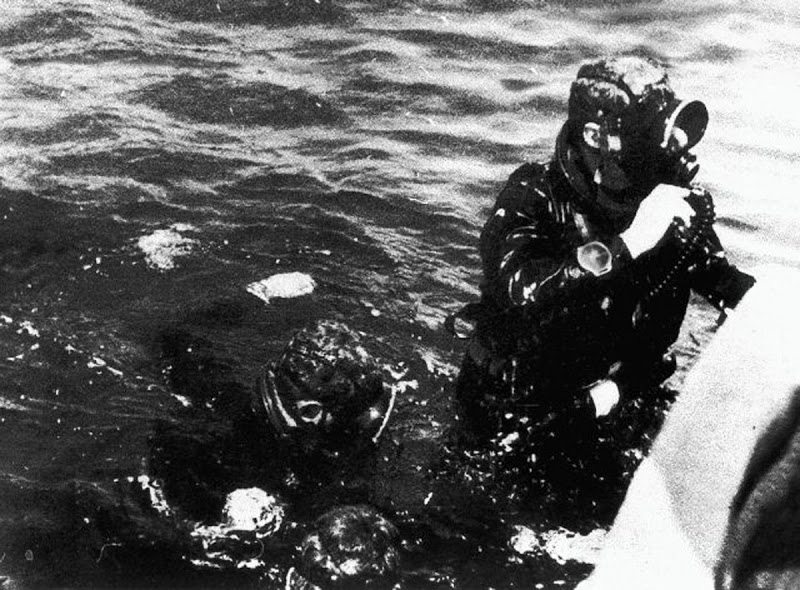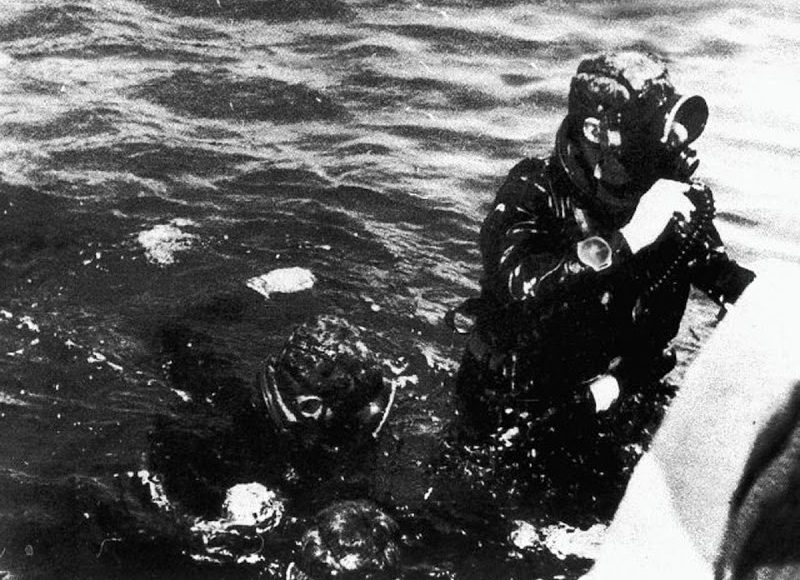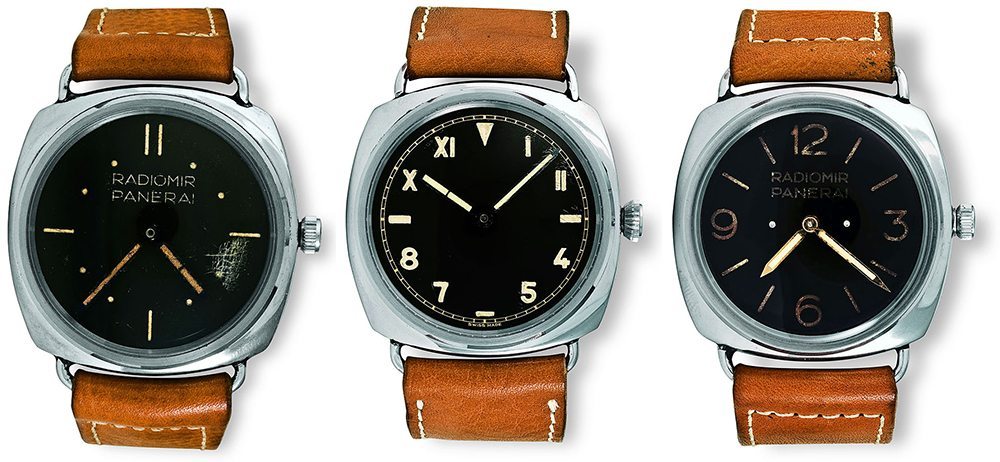The Dive Watch: Origins
In diving, it used to be that having a reliable watch could be the difference between life and death. It was a device that could track how long you’d been underwater. It could help you calculate decompression stops. Plus, it kept you aware of how much air you had left in your tank. During the mid-twentieth century, the sport of diving was growing in popularity. As a result, there were plenty of top-tier dive watches to choose from. It’s fascinating to see how this watch has evolved over time. It started as a pure time-keeping device. Then, it became an indispensable professional tool. Now, it’s a modern style staple. The dive watch, with origins in commercial & military applications, is one of the most common watch styles in the world. Learn the dive watch history from Crown & Caliber.
The Rolex Oyster
It’s almost impossible to find a period of horological innovation where Rolex has not made its mark in some way. The dive watch history is no different. The Rolex Oyster had been in development for years before Hans Wilsdorf, the company’s founder, registered the patent in 1926. During this period, wristwatches were becoming far more than glorified pocket watches with straps. The water-resistant wristwatch was an impressive novelty.
Before the Oyster came the Rolex Hermetic. The concept for this model sealed the movement and winding crown inside a two-piece case. It was similar to the way a lid screws onto a jar. It successfully protected the watch from liquid, but the design wasn’t convenient for everyday use. The Rolex Oyster improved upon the Hermetic. It featured an all-new patented system. It screwed down the bezel, caseback, and winding crown against the middle case, which was comprised of a solid block of steel, gold, or platinum. In addition, they patented a winding crown that screwed down like a hatch on a submarine.
Wilsdorf possessed a shrewd marketing mind. So, when it came to showcasing the Oyster’s innovative design, he devised two brilliant ideas. The first was placing the watch in a fish bowl and setting it in the window of his shop to the amusement of passers-by. The second was putting a Rolex Oyster on the neck of Mercedes Gleitze when she swam across the English Channel in 1927. Gleitze had already attempted to swim the channel eight times, once successfully, a feat that took her around fifteen hours. In this particular attempt, Gleitze wanted to prove herself to skeptics, who had revealed a fraud that claimed to have made the swim in thirteen hours. Ultimately, Gleitze didn’t make it across the ninth time due to near-hypothermia. However, the Rolex Oyster around her neck came out of the water in perfect working order. The swim certainly made Rolex a household name. Yet, it’s still debatable if the Oyster was in fact the first dive watch. Still, as the first water-resistant watch on the market, the Oyster served as a blueprint for subsequent dive watches.
The OMEGA Marine
The Rolex Oyster case was very good at making the watch water-resistant. However, it wasn’t intended to handle much more than that, such as the pressure at deeper depths. That’s where the OMEGA Marine came in. The Marine is another key model in the dive watch history. It reintroduced the concept Rolex had abandoned with the Hermetic. The result was the first dive watch made specifically to take on greater depths.
Introduced in 1932, the Marine’s design was simple: a watch inside a hermetic outer casing, sealed by a gasket. To get around Rolex’s patents on the screw-down winding crown, OMEGA created a rectangular watch. This allows it to slide in and out of the secure casing. In addition, the Marine was notably the first watch to use a synthetic sapphire front, which enhanced its reliability. Soon, the Marine became the preferred watch of submarine explorers. Among the watch’s famous wearers was Yves Paul Gaston le Prieur, an officer of the French Navy who invented the first scuba device. He touted the watch’s credibility among the burgeoning diving community.
When it came time to put the Marine to the test, OMEGA was ready. In 1936, two Marine watches and a sealed Marine casing spent several minutes in hot water at 85 degrees Celsius. Then, they submerged them to a depth of 70 meters in Lake Geneva, around five degrees Celsius, for thirty minutes. When they emerged, both watches worked perfectly, and none of the cases showed any trace of water inside.
The Panerai Radiomir
The dive watch history continued to evolve as the model became a practical tool at the onset of WWII. Around that time, Panerai had two important partnerships: one with the Italian Navy and one with Rolex. By 1935, Panerai had begun working with Rolex to develop their first wristwatches and subsequently their first dive watch. They based the design off a Rolex Oyster pocket watch with three stipulations. It had to be water-resistant, highly legible under water, and large in size. These three guiding principles continue to remain true for Panerai watches today.
Panerai coupled their patented luminous material, Radiomir, with Rolex’s Oyster technology to create the first Radiomir watch prototype in 1936. It featured a hefty, oversized 47mm steel case with wire lugs, a hand-wound mechanical movement, and a water-resistant strap. Considered incredibly oversized for the time, the Radiomir’s large cushion-shape, minimalist dial, and water-resistant Rolex movement was an indispensable tool. It proved to be essential for the Frogmen of the Italian Navy, the elite diving team who used manned torpedoes as an offensive strategy during World War II, as well as the Regia Marina divers who needed a reliable tool for measuring time and distance underwater for extended periods of time.
1953: The Year of the Dive Watch
Still, it wouldn’t be until the next decade that the dive watch would enter the public consciousness as more than a tool for divers. In the post-war period of the 1950s, the sport of diving started to grow in popularity. This is in large part because of Jacques Cousteau’s invention of the aqualung and his popularization of sea exploration. 1953 is particularly important in the dive watch history. That year, the consumer market saw the introduction of some of the most iconic dive watches in watchmaking history.
The Blancpain Fifty Fathoms
Blancpain originally designed the Fifty Fathoms to fulfill a military need, much like the Panerai Radiomir. Captain Robert “Bob” Maloubier and Lieutenant Claude Riffaud, ran the French Navy’s Combat Diving School following World War II. They approached Blancpain to help them develop a durable diving tool for the military’s combat swimmers. Luckily for them, Jean-Jacques Fiechter, Blancpain’s CEO from 1950 to 1980, was an avid diver. In him, they found a kindred spirit who was up for the challenge.
Together, they created a watch that was water-resistant up to a depth of 50 fathoms, or almost 100 meters. It was the first dive watch to feature a rotating bezel that helped gauge oxygen usage underwater. To minimize the wear of a manual winding crown, Blancpain also designed an automatic movement resistant to magnetic fields.
In 1953, the Fifty Fathoms became the official watch of the French combat diving corps. A year later, it hit the civilian market. Notably, the Fifty Fathoms was sold in diving shops rather than jewelry stores – the mark of a true diving tool. It only gained widespread popularity after Jacques Cousteau wore it during the historic dives chronicled in his award-winning film Silent World.
The Zodiac Sea Wolf Watch
1953 also saw the introduction of the Zodiac Sea Wolf watch. Models like the Fifty Fathoms have continued to rise in prominence over the years. However, the Zodiac dive watch has mostly fallen by the wayside. This was in part because of the Quartz Crisis of the 1960s and 70s. However, when it first debuted, it was the ultimate tool watch. Similar to the Fifty Fathoms and Radiomir, the Zodiac Sea Wolf watch quickly gained popularity with military forces, this time in Southeast Asia.
At the time, the Zodiac dive watch stood out for both its affordable price point and its design. It was quite unlike anything on the market. For one, it was only 35mm, which made it significantly smaller than the other popular dive watches. Still, what made the Zodiac Sea Wolf watch so notable was its ability to go to depths of 200 meters. This made it the most durable of any dive watch at the time.
The Rolex Submariner
The last and certainly not least of the notable dive watches introduced in 1953 is the Rolex Submariner. The Submariner’s now-classic design was purposeful. Their mission was to create a watch that could both function for divers and incorporate a more elegant design. Wilsdorf delivered. Rolex produced a tool watch with a rotating bezel, luminous markers, and less-sporty design that could transition from sea to dry land. The precise detail of the Submariner’s design is what makes it one of the most ubiquitous watches in the world.
Still, at the time, it was important the Submariner resonated with divers in the same way its competitors did. So, Rolex decided to put the model to the test. They recruited Auguste Piccard, a Swiss physicist and explorer. In 1953, Piccard descended over 3100 meters into the ocean with a Submariner attached to his Bathyscaphe deep-diving submarine’s hull. When the Bathyscaphe came out of the water, the Rolex watch was still working properly.
An Enduring Design
At the height of diving’s popularity as a sport and the beginning of man’s oceanic exploration, the dive watch was an essential tool. Now, its functionality may be somewhat superfluous in a world diving computers and other technology. Either way, in the past and in the present, the dive watch retains its relevance. It’s versatile, classically designed, and extremely useful under pressure.

Photo credits: Featured | 1 | 2 | 3 | 4 | 5 | 6 | 7 | 8
Get More Articles Like This in Your Inbox
We're constantly creating great content like this. So, why not get it delivered directly to your inbox? By subscribing you agree to our Privacy Policy but you can unsubscribe at any time.








